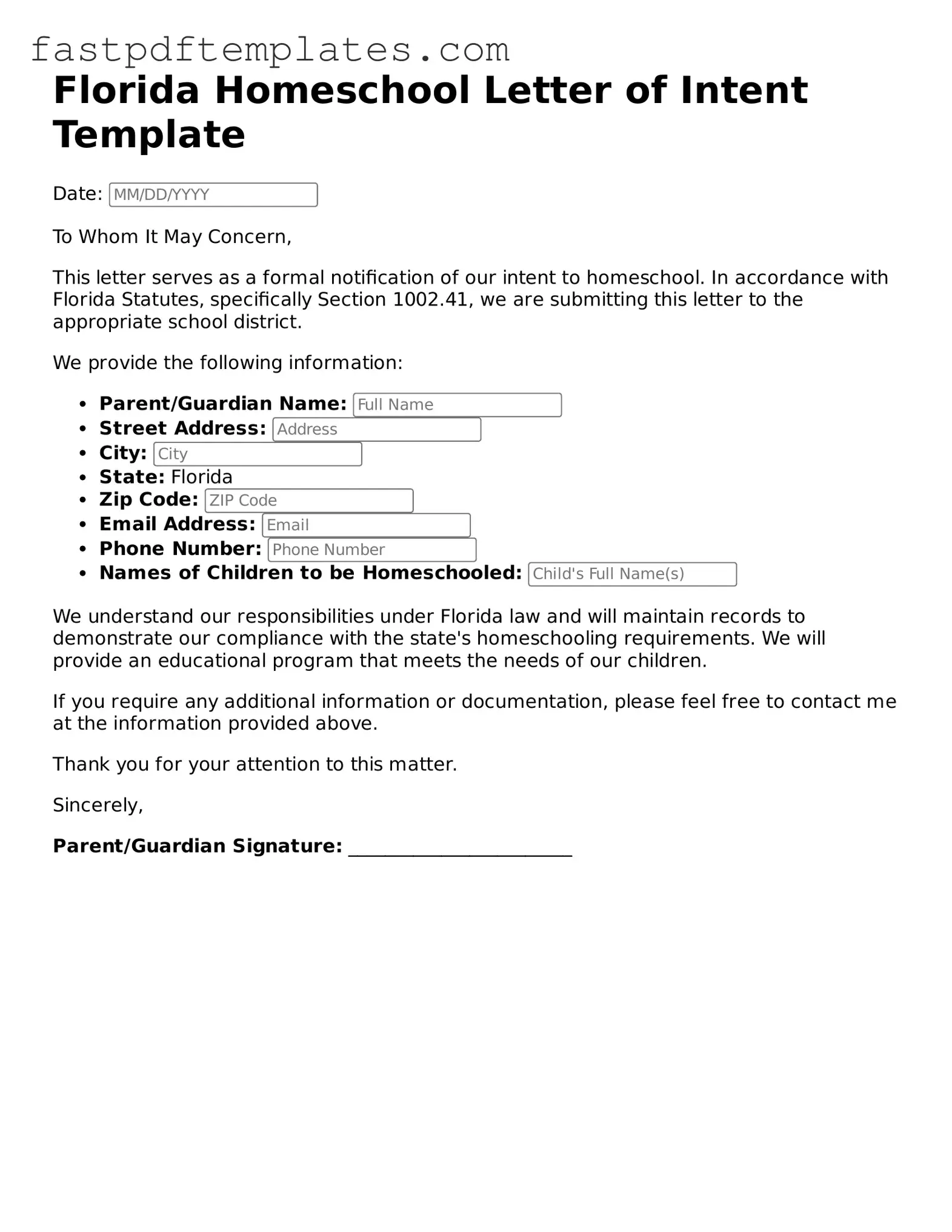The Florida Homeschool Letter of Intent form is similar to the Notice of Intent form used in many states for families wishing to homeschool their children. This document typically serves as a formal declaration to the local school district that parents intend to educate their children at home. It often requires basic information such as the names of the children and the educational curriculum planned, similar to Florida's requirements for transparency and communication with educational authorities.
Another document that bears resemblance is the Private School Enrollment Form. This form is used when parents decide to enroll their children in a private school rather than a public school. Like the Homeschool Letter of Intent, it requires parents to provide personal information about their children and details about the educational approach. Both documents aim to inform educational institutions of the child's educational setting.
The Individualized Education Program (IEP) is also comparable, especially for children with special needs. An IEP outlines specific educational goals and services for a child. While the Homeschool Letter of Intent focuses on the intent to homeschool, an IEP emphasizes the tailored educational plan for the child, ensuring that their unique needs are met in a home setting.
The Educational Services Agreement is another similar document. This agreement is often used when parents hire tutors or educational consultants to assist with their child's learning. Like the Homeschool Letter of Intent, it establishes a formal understanding of the educational approach and the responsibilities of each party involved in the child's education.
The Notification of Home Education Program is a document that some states require, similar to Florida's Homeschool Letter of Intent. This notification informs the local school district that parents are opting for home education. It typically includes information about the educational curriculum and assessment methods, paralleling Florida's focus on maintaining educational standards.
The School Withdrawal Form is also relevant. When parents decide to withdraw their child from a public school to homeschool, they often need to submit this form. This document ensures that the school is aware of the change in the child's educational status, much like the Homeschool Letter of Intent serves to notify the district of the family's educational choice.
The Curriculum Plan is another document that aligns with the Homeschool Letter of Intent. While the intent form states the desire to homeschool, the curriculum plan details the specific educational materials and methods the family will use. Both documents are important for outlining the educational framework and maintaining accountability in the homeschooling process.
Lastly, the Affidavit of Educational Intent is similar in that it serves as a formal declaration of a family's intent to educate their children at home. This affidavit often includes sworn statements regarding the educational approach and compliance with state laws, paralleling the objectives of the Florida Homeschool Letter of Intent in establishing a clear understanding of the family's educational intentions.
